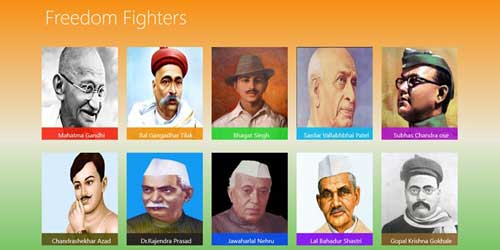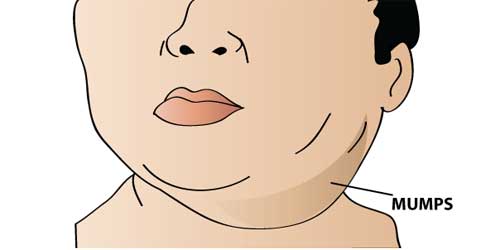Freedom fighters are those person who are engaged in a resistance movement against what they believe to be an oppressive and illegitimate government. We bring you the list of freedom fighters and leaders who whole-heartedly sacrificed their lives so that their fellow Indians could live in a free nation.
Freedom Fighters
Annie Besant
She was an Irish lady who came to India to attend the Annual Convention of the Theosophical Society at Adyar in Madras in 1893. She became the President of Indian National Congress in 1917. She is well known for her Home Rule movement. She also established the Central Hindu College in 1898, which later formed the nucleus of the Benares Hindu University.
Rabindranath Tagore
Poet, playwright, novelist, short story writer, musician, artist, actor, and director philosopher was born on May 7, 1861. Won the Nobel prize for literature in 1913 for his collection of verses Geetanjali. He was awarded the knighthood in 1915 but returned it in 1919 as a protest against the Jallianwala Bagh Massacre.
Acharya Vinoba Bhave
A true Gandhian, he was arrested for participating in the Dandi march in 1930. He was one of the moving spirits behind the Nagpur Flag Satyagraha. He is well known for his Bhoodan and Sarvodaya Movement.
Aurobindo Ghosh
Born on August 15, 1872, in Kolkata he embarked himself in the freedom movement from 1902 – 1910, later took refuge in Pondicherry devoting his life to the development of unique philosophy. He was a poet, philosopher and a politician. His most famous work is ‘Life Divine’. He passed away on December 5, 1950.
Also, Read: History of India in a nutshell
Sir Syed Ahmed Khan
He was the pioneer of Muslim education in India. His efforts ensured the laying of the foundation stone of Mohammedan Anglo Oriental College by Lord Lytton on Jan 8, 1877, at Aligarh which in 1920 became Aligarh Muslim University.
Dr. Shyama Prasad Mukherji
He was the founder of the Bhartiya Jan Sangh in October 1951. He represented North Calcutta in the first Lok Sabha. As the leader of the opposition, he earned the title ‘Lion of Parliament’. Earlier when he was in the cabinet of Nehru he quit in protest over according special status to Jammu & Kashmir.
Mother Teresa
Her original name was Agnes Gonxha Bojaxhin. She was born in Skopje, then in Albania, now the capital of Macedonia on 26 Aug 1910. She founded the Missionaries of Charity and Nirmal Hriday a home for the dying destitute’s. Won Padma Shri in 1961, Nobel Peace Prize in 1979 and the Bharat Ratna in 1980.
Must Read: The Nobel Laureates from India
Jai Prakash Narayan
He joined the Civil disobedience movement of the 1930s. He organized the All India Congress Socialist Party along with Acharya Narendra Dev. On 26 Jun 1975, he launched Bhrashtachar Mitao Andolan, a movement against corruption which brought down the congress government in 1977.
Great Personalities
- The leader who formed a provisional government of free India in Singapore in 1943 – Subhash Chandra Bose
- The person who unfurled the Indian flag (then, green, yellow and red in colour) at Stuttgart in Germany at the World Socialist Congress in 1907, 18th August – Madame Bhikaji Cama
- The person who assassinated General O’Dyer, the British officer responsible for Jallianwala Bagh massacre – Uddham Singh
- The revolutionary founder of Hindustan Socialist Republican Army, shot himself dead at the end of an encounter with the police – Chandrashekhar Azad
- The freedom fighter who fasted unto death for 63 days in Lahore jail demanding equality for Indian prisoners – Jatin Das
- The author of Sarfaroshi ki Tamanna and mastermind of Kakori Train Dacoity – Ram Prasad Bismil
- The revolutionary who made an attempt to assassinate Mr. Scott, an English officer responsible for inflicting lathi blows on Lala Lajpat Rai, mistakenly killing one Mr. Saunders in the attempt. He also founded the Nav Jawan Bharat Sabha and threw a bomb in the Central Legislative Assembly – Bhagat Singh
- The freedom fighter who started the Indian Home Rule Society in 1905 in UK. He also founded the Ghadar Party in 1913 in San Francisco – Lala Hardayal
Don’t Miss:







